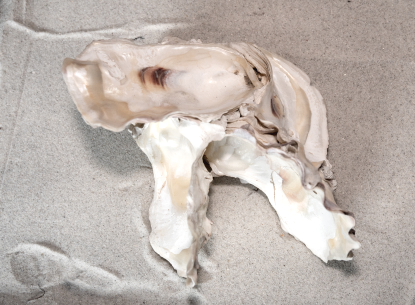
Crassostrea virginica
The Eastern Oyster is a large, distinctively shaped thick-shelled bivalve. The inner surface is smooth with a purple muscle scar.
They live on hard or soft bottom, up to 40 feet deep.
Eastern Oysters filter up to fifty gallons a day to feed on planktonic organisms and detritus. They start life as male, change sex several times and end life as females. These oysters typically reach about 3 inches long in 18 to 24 months and 5.9 inches long in 5 or 6 years. They can live up to 25 to 30 years and reach a maximum size of 11 inches. Predators include crabs, seabirds, sea stars, and Cownose Rays.
Oysters are an important source of human food. Thirty miles of the Florida Panhandle has historically produced 90% of the State’s oysters (mostly in Apalachicola Bay). Hurricanes, changes in water salinity, diverting and overuse of freshwater streams and rivers, plus habitat loss and overfishing have decimated populations. The decline is so critical that the Florida Fish and Wildlife Conservation Commission has suspended the harvest of all wild oysters in Apalachicola Bay until December of 2025.
Live shells should never be taken from any Florida State Park.